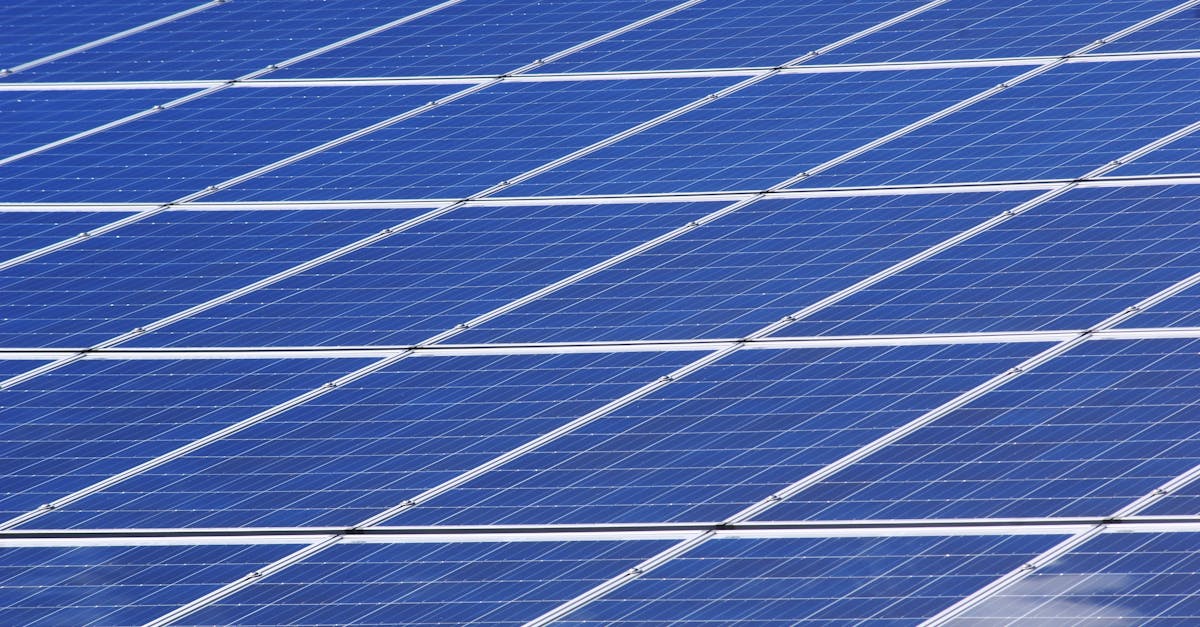This article explores how choosing the right paint color can significantly enhance home energy efficiency. It highlights the differences between darker and lighter colors, emphasizing how each can affect indoor temperatures by either absorbing or reflecting solar energy. Key tips include selecting colors based on climate, understanding the impact of finishes, and considering heat-reflective technologies. Additionally, it discusses the importance of proper insulation and ventilation to complement color choices and maximize energy savings. The article aims to guide homeowners in making informed decisions that not only beautify their space but also reduce energy costs.
Current Trends in House Painting and Remodeling
Embracing the latest painting and remodeling trends can transform a home, enhancing its aesthetic appeal and energy efficiency. Today, homeowners are diving into vibrant color palettes and innovative materials, aiming to create spaces that reflect their personal style while also fostering a comfortable environment. From the captivating hues found in Scandinavian architecture to modern techniques that ensure durability and sustainability, painting trends are evolving.
Choosing the right colors goes beyond mere appearance; colors play a significant role in influencing mood and energy consumption. With many homeowners looking to balance style with functionality, understanding the impact of exterior color schemes on energy efficiency has never been more crucial. In this article, explore popular color trends, effective painting techniques, and innovative materials that cater to homeowners’ desires for both beauty and practicality.

| Feature | Details |
|---|---|
| Color Choice | Choose light colors in hot climates to reflect sunlight, and dark colors in colder areas to absorb heat. |
| Solar Reflective Paints | Utilize paints with heat-reflective technology to enhance utility bills and maintain comfortable indoor temperatures. |
| Insulation Compatibility | Ensure the selected paint color works with existing insulation and ventilation to maximize energy efficiency. |
| Finish Type | Consider matte finishes which absorb more heat versus satin or semi-gloss that reflect it. |
| Tree Planting | Incorporate landscaping by planting trees to provide shade, thereby reducing heat absorption. |
| Roof Color | Opt for lighter roof colors in warm climates; dark roofs can be beneficial in cold areas. |
| Trimming and Accents | Use lighter trims and accents to create a balance with darker walls, enhancing overall aesthetic and energy efficiency. |
| Regular Maintenance | Maintain the exterior paint to avoid deterioration, which can affect thermal performance. |
Current Trends in House Painting and Remodeling
The Impact of Color Choice
The color scheme of a home extends beyond mere aesthetics; it influences mood, energy efficiency, and even property value. Bold colors are making a strong comeback, resonating with those who wish to express their personality. From deep greens, inspired by Scandinavian homes, to rich ambers and blues, homeowners are taking risks that pay off in vibrant visual appeal.
However, choosing a color should also account for the environment. Homes painted in darker colors may absorb more heat, which can be beneficial in colder climates but detrimental in hotter ones. For example, deep browns and navies have a Solar Reflectance Index (SRI) under 50 and are thus effective in absorbing heat, making them suitable for colder regions where warmth is desired.
Light versus Dark Color Schemes
Understanding the balance between light and dark colors is crucial for homeowners in various climates. Light colors, like pastel shades, reflect sunlight, keeping homes cooler and reducing air conditioning costs. Conversely, dark colors can trap heat—this is beneficial in northern climates where winters are long and cold, as darker shades absorb sunlight effectively, offering energy savings. Nevertheless, this choice isn’t straightforward, and many variables come into play.
Choosing the Right Use of Material
When it comes to materials, it’s not just about picking a color. The type of siding or roofing can affect the thermal dynamics of a home. Materials like metal heat up quickly, while others like wood or brick retain heat longer. As such, homeowners need to consider the insulation quality and the materials chosen to avoid potential overheating, particularly with roofs. The trend toward using heat-reflective coatings on roofs is gaining attention, especially for those who wish to lower indoor temperatures effectively.
Innovative Techniques and Finishes
The 2025 trends point towards using innovative paint technologies and finishes that enhance visual appeal while improving energy efficiency. For example, many brands are now offering heat-reflective paints that come in rich, deeper colors without sacrificing comfort. Additionally, the textures and finishes available today—such as satin and semi-gloss—are designed to mitigate heat absorption while providing a beautiful look.
Further down the line, textured painting techniques such as sponging or rag rolling are becoming popular as they add unique character to home exteriors and interiors alike. Such techniques allow homeowners to customize their spaces according to specific styles, striking a balance between personal flair and market appeal.
Best Practices for Dark-Colored Homes
For homeowners considering dark color schemes, there are several best practices to employ:
- Choose a high-quality insulation system to limit heat transfer.
- Utilize proper ventilation methods to balance indoor temperatures.
- Implement lighter trims and accents to break up the heaviness associated with darker shades.
- Consider heat-reflective paints or coatings when selecting your exterior color.
- Maintain adequate natural light through windows to alleviate any feelings of confinement.
By implementing these strategies, an elegant and cozy atmosphere can be achieved without the risk of overwhelming indoor warmth.
Investing in the Right Roof Color
When considering roofing, think carefully about color choices. A black roof, for instance, significantly increases heat absorption. This can be useful in colder climates since it helps maintain warmth indoors, thus lowering energy bills during winter months. However, black roofs may be problematic in hotter areas unless accompanied by effective insulation and reflective barriers.
Innovative Landscaping Solutions for Climate Control
Landscape design is another vital element in maintaining a comfortable home climate, especially with darker-colored houses. For instance, planting bushes and trees around the exterior creates natural shade and has been noted to reduce heat absorption substantially. This living barrier not only enhances the aesthetic appeal of the property but also contributes to creating a microclimate.
For eco-conscious homeowners, opting for shade-providing plants and greenery serves double duty: beautifying the home while providing essential energy savings. Consider the benefits of planting strategically to allow for airflow while blocking direct sun exposure during the hottest parts of the day.
Interior Color Considerations
Interior color trends are also shifting. The emphasis is on creating a cohesive look that flows from outside to inside your home. Lighter colors are dominating interior styles in warmer climates, while medium to dark tones remain popular in areas with long winters. Color choices have a significant influence on room size perception, lighting conditions, and overall comfort.
If the exterior is painted in a striking dark hue, consider balancing it with lighter or brighter interior paints, which maintain an airy feel. Popular choices for interiors include soft pastels or brighter whites that mirror the energy efficiency discussed for exteriors. Consultation services such as those available through top interior painting resources can aid in making the right choices.
Embracing Change Through Trends
In the realm of home painting and remodeling, changing trends serve as a guide rather than a strict rulebook. Homeowners are being encouraged to focus on incorporating personalization while still being mindful of their environment. This means evaluating community guidelines, building regulations, and climate factors before diving into color and material choices.
Furthermore, staying informed of the latest trends in finishes and techniques empowers homeowners to make decisions that best reflect their tastes while contributing positively to their home’s exterior and interior aesthetics. choosing the right style, color, and materials can greatly enhance both functionality and beauty in the home.

Transform Your Home with Expert Painting and Remodeling Services
Are you ready to elevate your living space? Our dedicated team specializes in providing stunning paint and remodeling solutions tailored to your unique style. Enjoy a beautiful, energy-efficient home that reflects your personality while increasing its value. Don’t wait any longer, reach out today to discover how we can bring your vision to life!
Current Trends and Tips in Home Painting and Remodeling
Trendy Color Choices
- Deep Greens and Blues: These colors evoke a sense of nature and tranquility, proving to be popular for homeowners looking to create a soothing atmosphere.
- Bold Accents: Pairing bold colors with neutral bases can create striking contrast, allowing homeowners to express their personality without overwhelming the exterior.
- Pantone Color of the Year: Keeping an eye on the annual Pantone Color can offer inspiration for trendy palettes that resonate with contemporary aesthetics.
Innovative Painting Techniques
- Heat-Reflective Paints: Utilizing paints with heat-reflective properties can aid in maintaining a comfortable indoor temperature while providing deeper colors.
- Matte Finishes: Matte paints are gaining traction for their ability to hide imperfections and lend a sophisticated touch to home exteriors.
- Textured Effects: Implementing textured finishes can add depth and interest to walls, breaking the monotony of flat surfaces.
Practical Tips for Homeowners
- Consider Your Climate: Assessing the local climate is crucial when choosing a paint color; darker hues absorb heat better, while lighter shades reflect it, significantly impacting your energy bills.
- Invest in Quality Insulation: Regardless of paint choice, having proper insulation will enhance energy efficiency and comfort inside the home.
- Use Lighter Trims: Incorporating lighter color trims can provide a refreshing contrast that highlights darker wall colors while maintaining an inviting atmosphere.
- Maintain Regular Upkeep: Be prepared for regular maintenance with darker colors, as they tend to show dirt and fading more prominently.
Frequently asked questions
Glossary of Key Terms Related to Home Painting and Remodeling Trends
- Energy Efficiency
- The ability of a home to use less energy for the same level of comfort and functionality, often influenced by color choices, insulation, and ventilation.
- Solar Reflectance Index (SRI)
- A measure of how well a material reflects solar heat, with lower values indicating higher heat absorption; important for choosing exterior paint colors.
- Dark Colors
- Paint hues that absorb more sunlight, such as navy or charcoal, which can help retain warmth in colder climates.
- Light Colors
- Paint shades that reflect sunlight, such as white or pastel tones, often recommended for warmer climates to keep homes cooler.
- Matte Finish
- A type of paint with a non-reflective surface that tends to absorb more heat compared to glossier finishes.
- Heat-Reflective Technology
- Advanced paint formulations designed to minimize heat absorption while allowing deeper color choices.
- Insulation
- Materials and methods used to reduce heat flow into and out of a home, essential for maintaining comfortable temperatures and energy efficiency.
- Ventilation
- The process of exchanging stale indoor air with fresh outdoor air, which is crucial for managing home temperature and moisture levels.
- Outdoor Shading
- Using elements like awnings, trees, or shrubs to block direct sunlight, which can help in reducing indoor temperatures.
- Reflective Roofing
- Roof materials designed to reflect more sunlight and reduce heat absorption, beneficial in hot climates to maintain cooler indoor spaces.
Conclusion
Understanding how to use paint to improve home energy efficiency is crucial for homeowners looking to enhance their living spaces while saving on energy costs. Choosing the right colors, whether dark to absorb heat in colder climates or light to reflect it in warmer areas, plays a significant role in managing your home’s temperature. Beyond aesthetics, strategic paint choices can contribute to greater comfort and energy savings. By applying these insights and considering elements such as insulation and ventilation alongside color selection, homeowners can create both a beautiful and energy-efficient environment.
Choosing the Right Colors
One of the most impactful decisions regarding home energy efficiency is the color of your exterior paint. Darker colors can absorb more heat, making them suitable for colder climates, while lighter colors reflect sunlight, ideal for warmer areas.
- Select deep shades like charcoal, navy, or forest green for homes in cold environments to help retain warmth.
- Opt for light colors such as white, beige, or light gray in hot climates to maintain cooler indoor temperatures.
Using Heat-Reflective Paints
Another way to strike a balance is by utilizing paints with heat-reflective technology. These special formulations allow you to enjoy richer colors while mitigating heat absorption.
- Consider applying satin or semi-gloss finishes as these coatings do not absorb heat as much as matte options.
Maximizing Natural Light
Enhancing your home’s interior light can create a more open and uplifting atmosphere, especially when using darker paint shades. For optimal results, accompany darker exteriors with ample natural lighting.
- Integrate large windows or skylights into your home design.
- Use lighter trims and accents to balance darker walls and keep the environment feeling airy.
Protecting Against Heat Transfer
Insulation and ventilation play crucial roles in maintaining energy efficiency. While paint color affects heat absorption, ensuring your home is well-insulated is equally important.
- Prioritize proper insulation in walls and attics to minimize heat transfer.
- Install reflective window films to reduce heat entering through windows.
Transform Your Home Today!
Ready to elevate your living space with stunning colors and expert craftsmanship? Our painting and remodeling services offer you the perfect blend of style and functionality, enhancing both the beauty and energy efficiency of your home. Don’t wait any longer, contact us now for a consultation!
Sophia Torres is the creative mind behind the most dazzling transformations at TS Painting & Restoration. With a strong background in interior design and a deep passion for tropical color palettes, she has helped hundreds of clients revitalize their spaces into vibrant and inviting environments. Born in Colombia and raised in Florida, Sophia brings a unique perspective to her work, blending Latin American influences with modern design trends.
Sophia’s vision of color goes beyond the conventional. She is known for her ability to create bold and unexpected combinations that reflect Florida’s natural beauty. Her focus on color psychology and strategic use of tones allows her to transform any environment, making each project a showcase of her clients’ personal style. On her blog, she shares practical tips on how to choose colors that not only beautify but also enhance emotional well-being and create harmony in the home.
When not working, Sophia enjoys exploring art galleries, experimenting with DIY projects, and finding inspiration in Florida’s lush landscapes. For her, design isn’t just about aesthetics; it’s about creating spaces that tell a story, reflect the identity of those who live there, and evoke positive emotions. At TS Painting & Restoration, Sophia is committed to helping homeowners discover how colors can transform their homes into true havens of tranquility and beauty.


